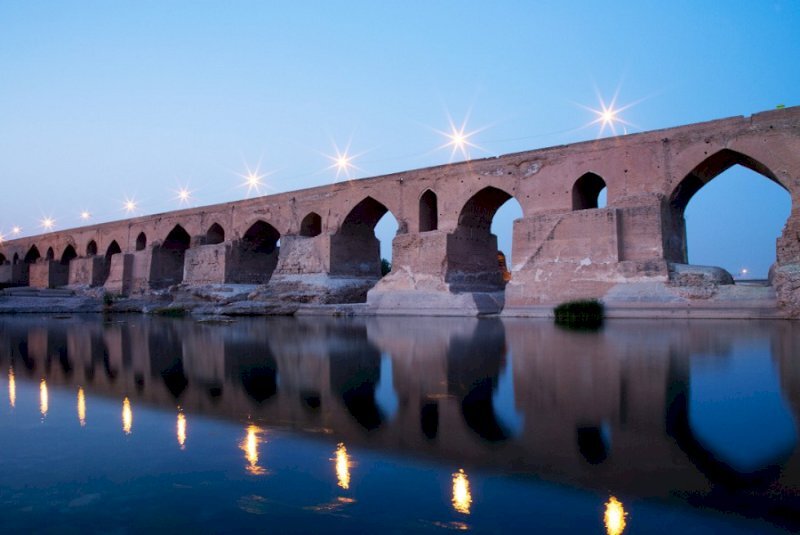Sassanid arch bridge restoration to begin

TEHRAN - The ruined monument was once an important arch bridge during the Sassanid era some 1,700 years ago.
But over the years, the mud-brick bridge, which is situated near the modern city of Dezful in southwestern Iran, fell into disrepair.
Now, after several rounds of restoration, parts of the bridge, including the roadway and piers, will be strengthened and secured, Dezful's tourism chief said Saturday.
Best known as the Dezful bridge, the massive monument on the Dez River is believed to be the oldest still-standing bridge in the world and it remained in full functionality until recently.
The historical bridge has been extensively repaired and renovated in various eras to ensure its functionality and preservation. Nowadays, cars are no longer allowed to pass over the structure due to their historical value and fragility.
It is said that the monument was built by Roman prisoners of war after suffering a defeat at the hands of the Sassanid king Shapur I the Great, who reigned over Persia from around 240-270 CE.
The Sassanid era is of very high importance in the history of Iran. Under the Sassanids, Persian architecture and the arts experienced a general renaissance. Architecture often took grandiose proportions, such as palaces at Ctesiphon, Firuzabad, and Sarvestan, which are amongst the highlights of the ensemble.
Generally, a Sassanid archaeological landscape represents a highly efficient system of land use and strategic usage of natural topography in the creation of the earliest cultural centers of the Sassanid civilization.
In 2018, an ensemble of Sassanian historical cities in southern Iran, titled “Sassanid Archaeological Landscape of Fars Region,” was named a UNESCO site. The ensemble comprises eight archaeological sites situated in three geographical parts of Firuzabad, Bishapur, and Sarvestan.
The World Heritage reflects the optimized usage of natural topography and bears witness to the influence of Achaemenid and Parthian cultural traditions and of Roman art, which later had a significant impact on the architecture and artistic styles of the Islamic era.
Apart from architecture, crafts such as metalwork and gem-engraving grew highly sophisticated, yet scholarship was encouraged by the state. In those years, works from both the East and West were translated into Pahlavi, the language of the Sassanians.
AFM
Leave a Comment